2D - Deformable submarine slide
For the simulation of the present benchmark problem, a coupled non-hydrostatic multilayer/Savage-Hutter model was used. The resulting model is weakly coupled, and the water feels the moving bottom, but the slide material is not affected by the gradient variations of water surface. The number of layers was set up to 5. Similar results are obtained with less layers, for example 3 as were considered in the previous tests. In this case, the number of layers was increased with the aim of obtaining a similar agreement with measured data as in previous benchmark problems but the numerical results remained similar for a larger number of layers. This may indicate that it is not a question of the dispersive properties of the model (that improve with the number of layers) but more likely due to some missing physics.
The one-dimensional domain [0, 5.47] is discretized with Ax = 0.005 m. The final time is 10 s. We set the CFL = 0.5 and g = 9.81. Wall boundary conditions were imposed. The ratio of densities r = is- = 0.78, the Coulomb friction was set to 8 = 12° and Manning n = 0.0002. Pb
Figure 10 shows the comparison of model results with lab data for the for wave gauges considered. Figure 11 depicts the water free surface and the grain location at several times during the numerical simulation.
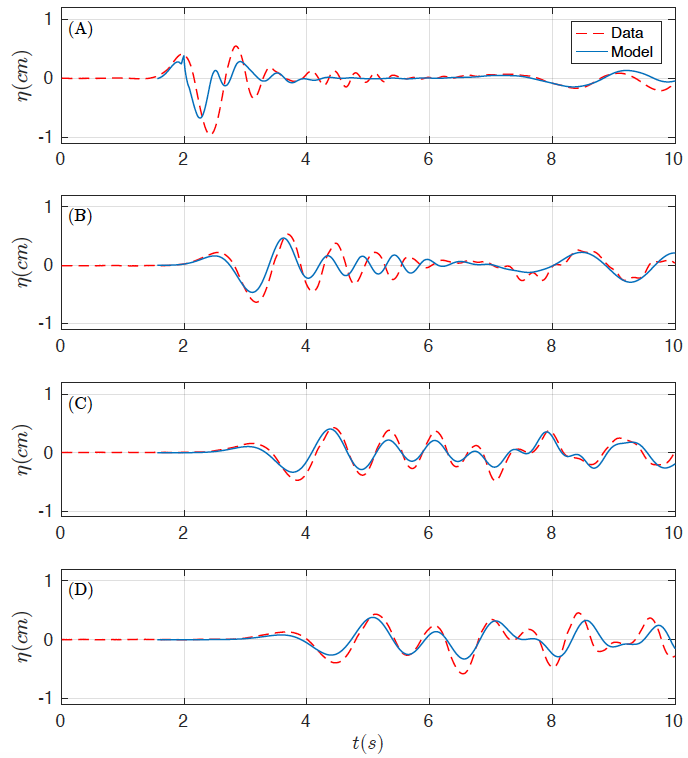
Figure 10. Comparison of data time series (red) and numerical (blue) at wave gauges (A) WG1, (B) WG2, (C) WG3, and (D) WG4.
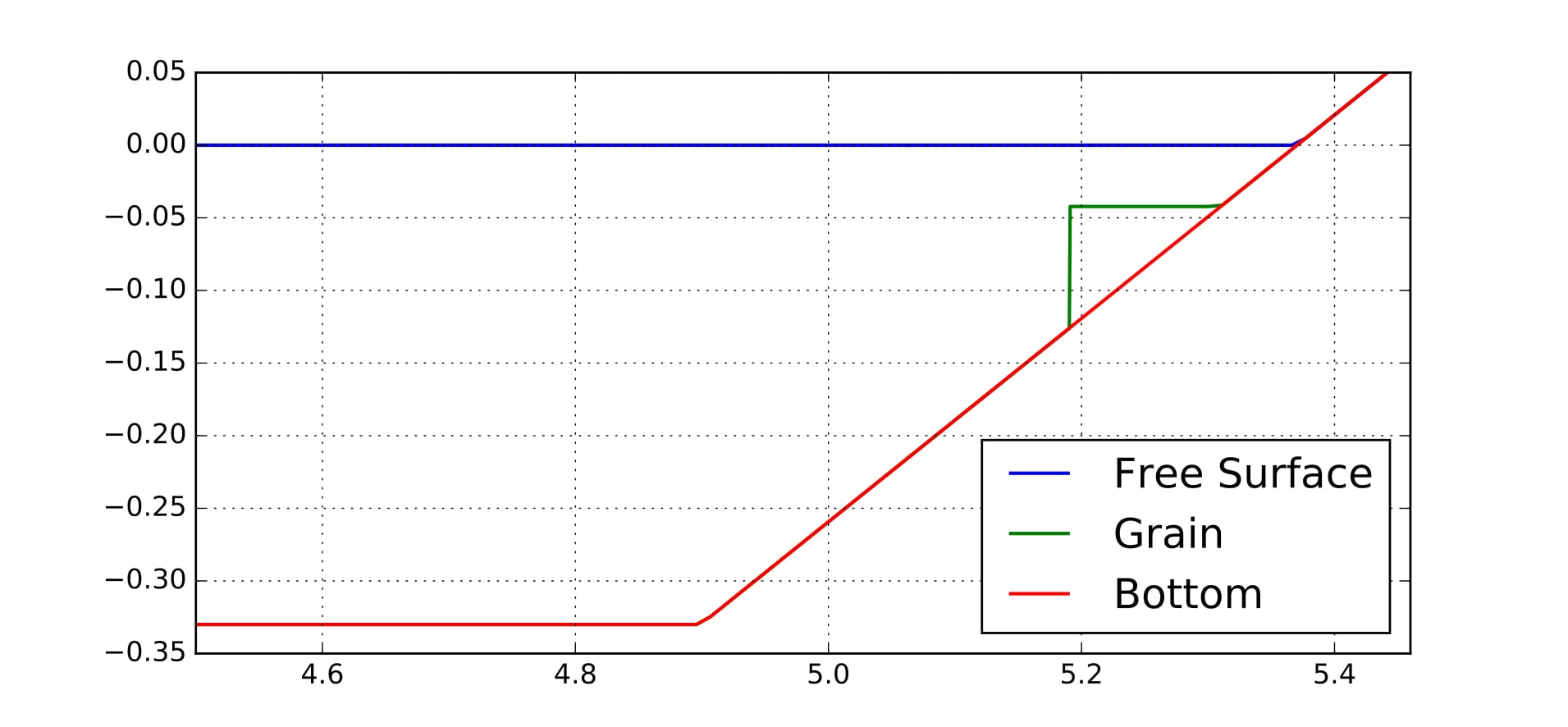
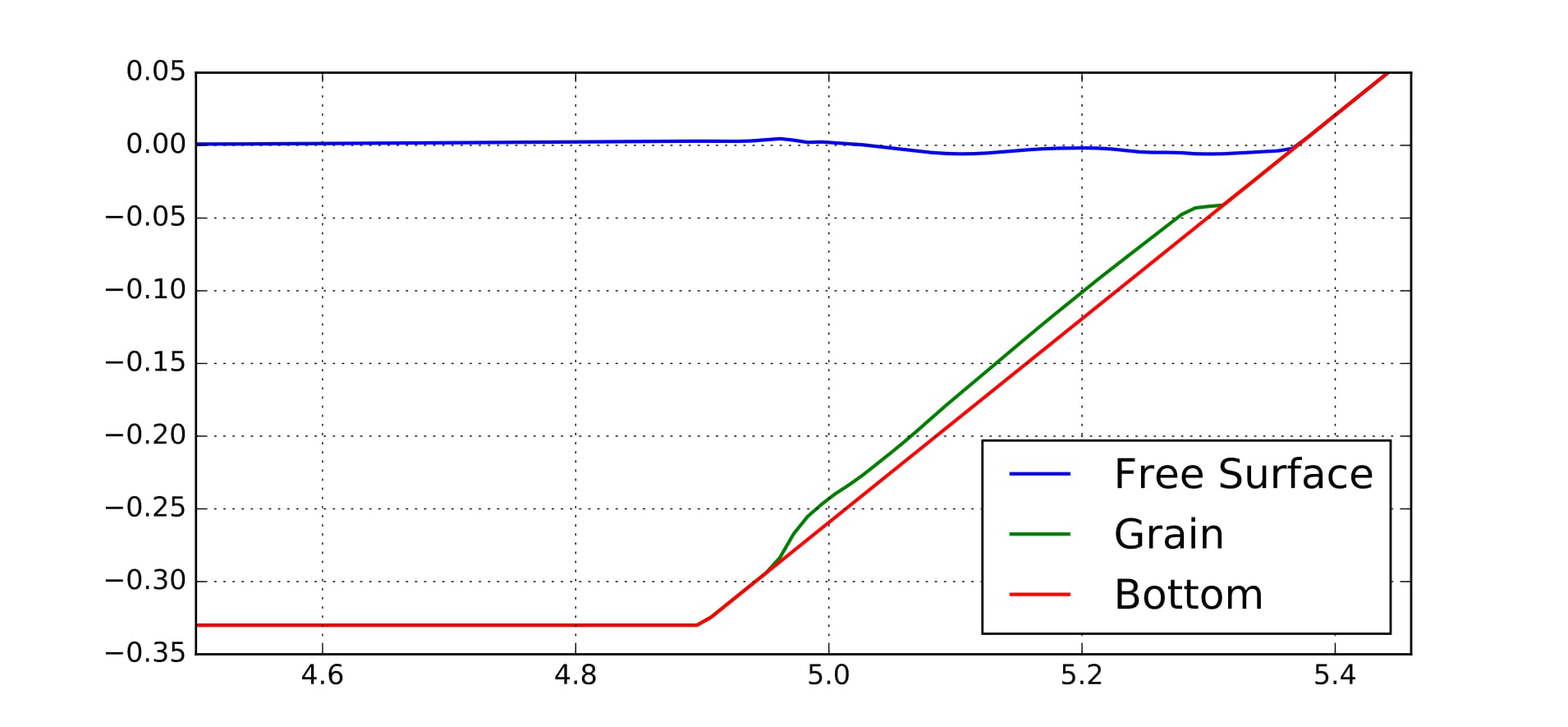
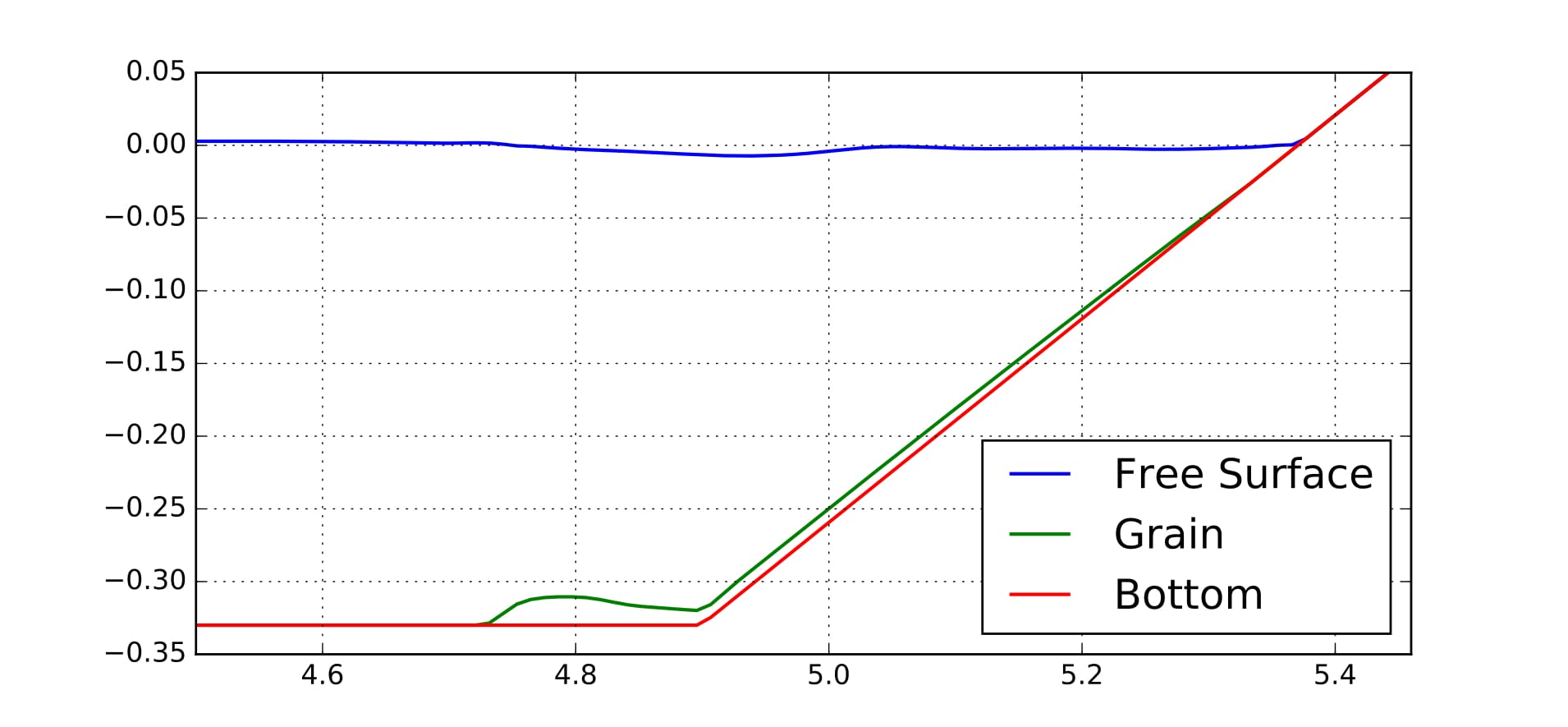
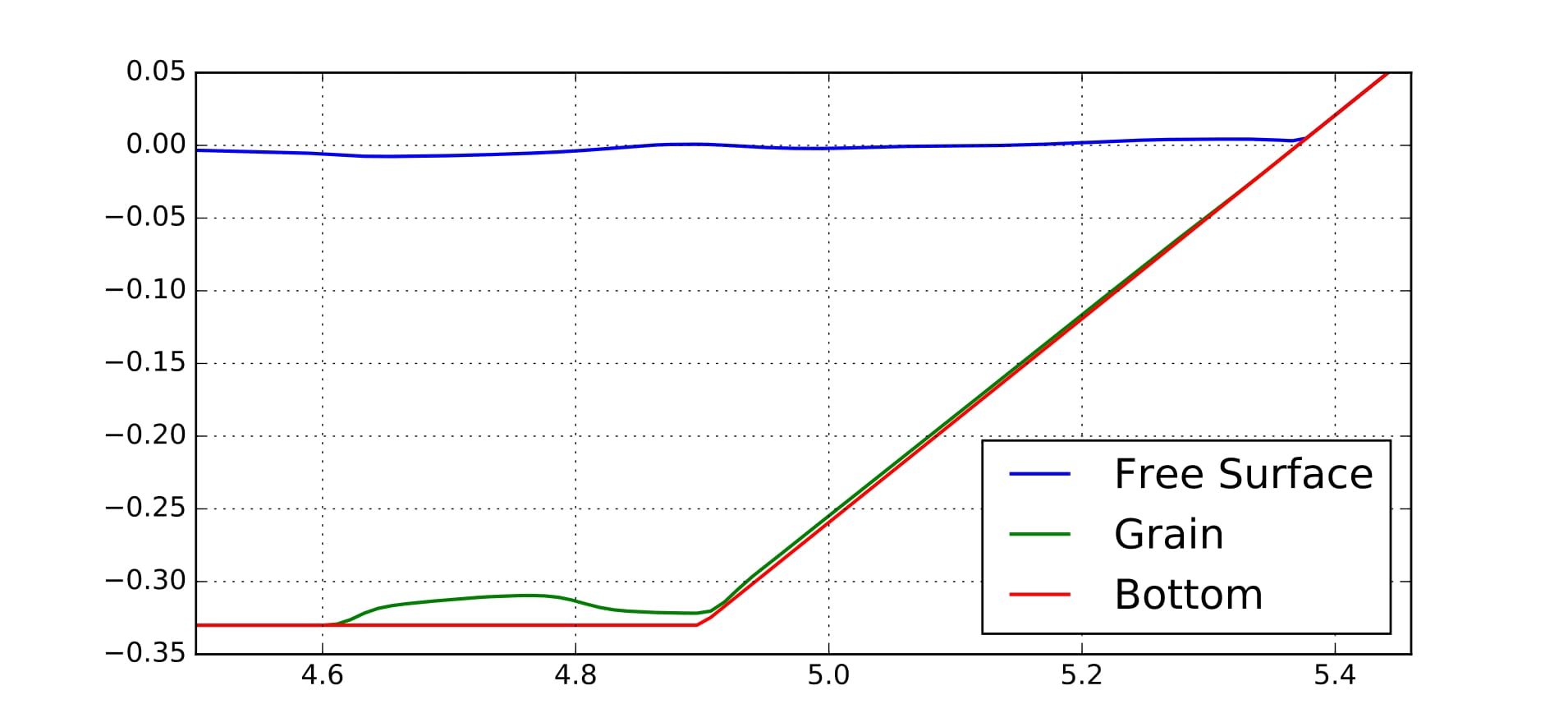
Figure 11. Numerical profiles of the water free surface elevation and the grain layer location at times $t=0,\ 0.3,\ 0.6,\ 0.9\ s
